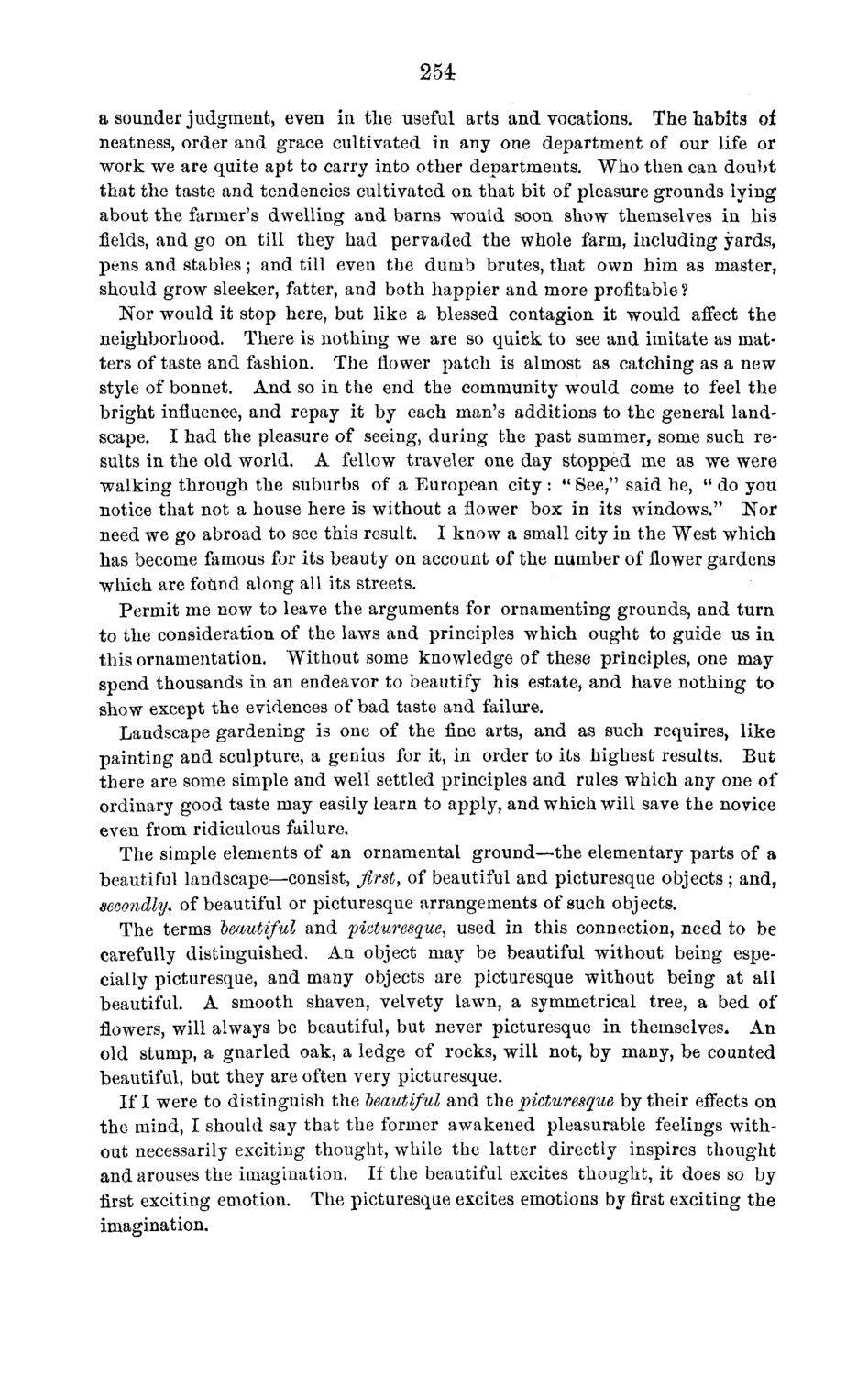| |
| |
Caption: Board of Trustees Minutes - 1870
This is a reduced-resolution page image for fast online browsing.

EXTRACTED TEXT FROM PAGE:
254: a sounder judgment, even in the useful arts and vocations. The habits of neatness, order and grace cultivated in any one department of our life or work we are quite apt to carry into other departments. Who then can d o u b t that the taste and tendencies cultivated on that bit of pleasure grounds lying about the farmer's dwelling and barns wouLd soon show themselves in his fields, and go on till they had pervaded the whole farm, including yards, pens and stables; and till even the dumb brutes, that own him as master, should grow sleeker, fatter, and both happier and more profitable ? Nor would it stop here, but like a blessed contagion it would affect t h e neighborhood. There is nothing we are so quick to see and imitate as matters of taste and fashion. The flower patch is almost as catching as a new style of bonnet. And so in the end the community would come to feel t h e bright influence, and repay it by each man's additions to the general landscape. I had the pleasure of seeing, during the past summer, some such results in the old world. A fellow traveler one day stopped me as we were walking through the suburbs of a European city : " See," said he, " do you notice that not a house here is without a flower box in its windows." N o r need we go abroad to see this result. I know a small city in the West which has become famous for its beauty on account of the number of flower gardens which are found along all its streets. Permit me now to leave the arguments for ornamenting grounds, and turn to the consideration of the laws and principles which ought to guide us in this ornamentation. Without some knowledge of these principles, one may spend thousands in an endeavor to beautify his estate, and have nothing to show except the evidences of bad taste and failure. Landscape gardening is one of the fine arts, and as such requires, like painting and sculpture, a genius for it, in order to its highest results. But there are some simple and well settled principles and rules which any one of ordinary good taste may easily learn to apply, and which will save the novice even from ridiculous failure. The simple elements of an ornamental ground—the elementary parts of a beautiful landscape—consist, first, of beautiful and picturesque objects ; and, secondly, of beautiful or picturesque arrangements of such objects. The terms beautiful and picturesque^ used in this connection, need to be carefully distinguished. An object may be beautiful without being especially picturesque, and many objects are picturesque without being at all beautiful. A smooth shaven, velvety lawTn, a symmetrical tree, a bed of flowers, will always be beautiful, but never picturesque in themselves. A n old stump, a gnarled oak, a ledge of rocks, will not, by many, be counted beautiful, but they are often very picturesque. If I were to distinguish the beautiful and the picturesque by their effects on the mind, I should say that the former awakened pleasurable feelings without necessarily exciting thought, while the latter directly inspires thought and arouses the imagination. If the beautiful excites thought, it does so by first exciting emotion. The picturesque excites emotions by first exciting t h e imagination.
| |